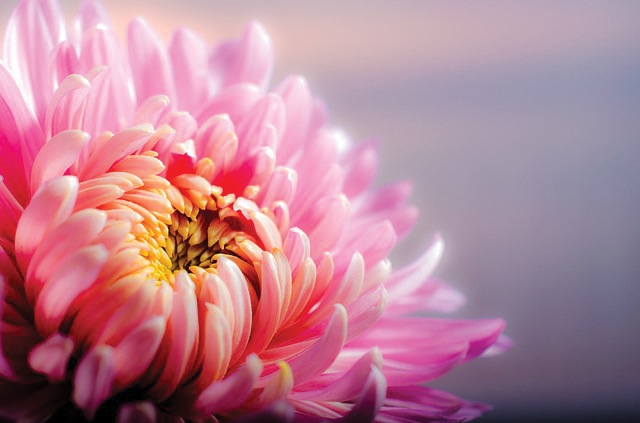Another change of the season and we are enjoying the cool nights and short days. Sleeping with the windows open is a special treat except, that I have a tin roof and several towering Oak trees right outside my bedroom window. I am surprised how much noise those tiny acorns can make. To complicate the matter I think I have a couple of bored teenage squirrels who throw acorns against the roof just to hear the noise or to see whose acorn can bounce the highest. I have gotten up twice today thinking someone was at the door only to realize it was the knock, knock of acorns. The barn area is even worse since we have a stately old walnut that bombs another tin roof with the bright green orbs. It’s enough to drive you nuts, pun intended.
Now is the time to think about where you can put some of those bright, fresh, and exuberant mums. Chrysanthemum (C. x morifolium, now reclassified as Dendranthema x grandiflorum) is a hardy fall mum, also commonly called garden mums. Chrysanthemums originated in China and Japan. These beautiful plants are the backbone of the late summer to fall garden. Plants range in height from one-foot cushion types to two feet or more. They come in an array of showy colors, including bronze, purple, yellow, mauve, red and white. Flower forms vary as well and include single daisies, tiny buttons and large doubles (football mums). Both buds and flowers withstand light frost, and new buds continue to open long after annuals have stopped for the season. Fall mums are short-day plants, which mean they need short days and long nights to initiate flower buds. (The long period of darkness at night is the most important.)
Obviously fall is here and I did not plant any mums in the spring. Lazy gardeners and immediate gratification people count on big box stores, roadside stands, nurserymen, and florist to have beautiful mums ready to plant most of these have been forced to bloom early. These fall mums need to be treated as annuals. Nothing could be easier, they can be plopped into the ground for a spot of instant color and can then be replaced when they stop flowering. Fall mums can be easily transplanted even when in full bloom. Because we are planting or transplanting them in the fall frequently they do not have enough time to become established in order to winter over until spring.
These potted mums need daily watering if left in the pots and almost as much water if planted in the ground. They have shallow roots and the nursery has given them a porous medium. When you buy your plants look for tight little buds that will be coming along later. If you need them to look spectacular because you’re having company this weekend, chose plants that are fully bloomed out. Avoid damaged or wilted plants. Please, don’t buy a problem.
After the flowering if you want to try to keep the plants you should cut back them back hard (3 to 6 inches). Once the ground has frozen, mulch with straw or hay. If you have a mum survive through the winter into the spring you can dig and divide the plants as soon as growth appears. They do best if divided annually. Discard any woody portion of the clump. Mums are easily rooted from cuttings taken in the spring and will produce a good-size blooming plant by fall.
Fall blooming chrysanthemums are ideal for combining with asters, ornamental grasses, and other late blooming perennials. Use fall mums to replace annuals that have stopped blooming, in containers, as an edging, or anywhere that needs a bit of late season color. Mass plantings are effective for adding bold color in front of hedges or along shrub borders.
Enjoy another beautiful, colorful Tennessee fall. We are so lucky that we have a long fall and spring. Scarecrows, pumpkins and mums, an unbeatable combination added to those falling nuts.









